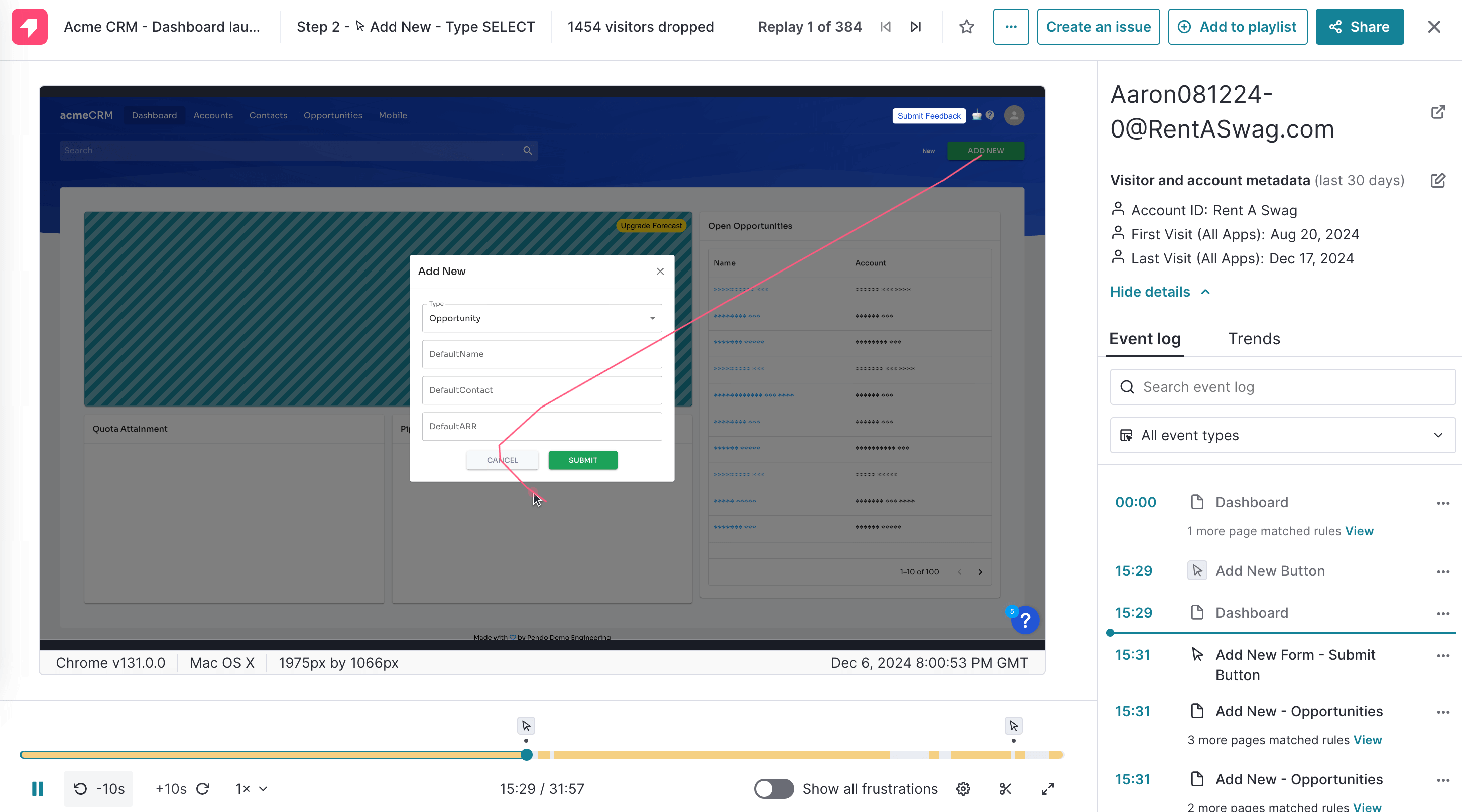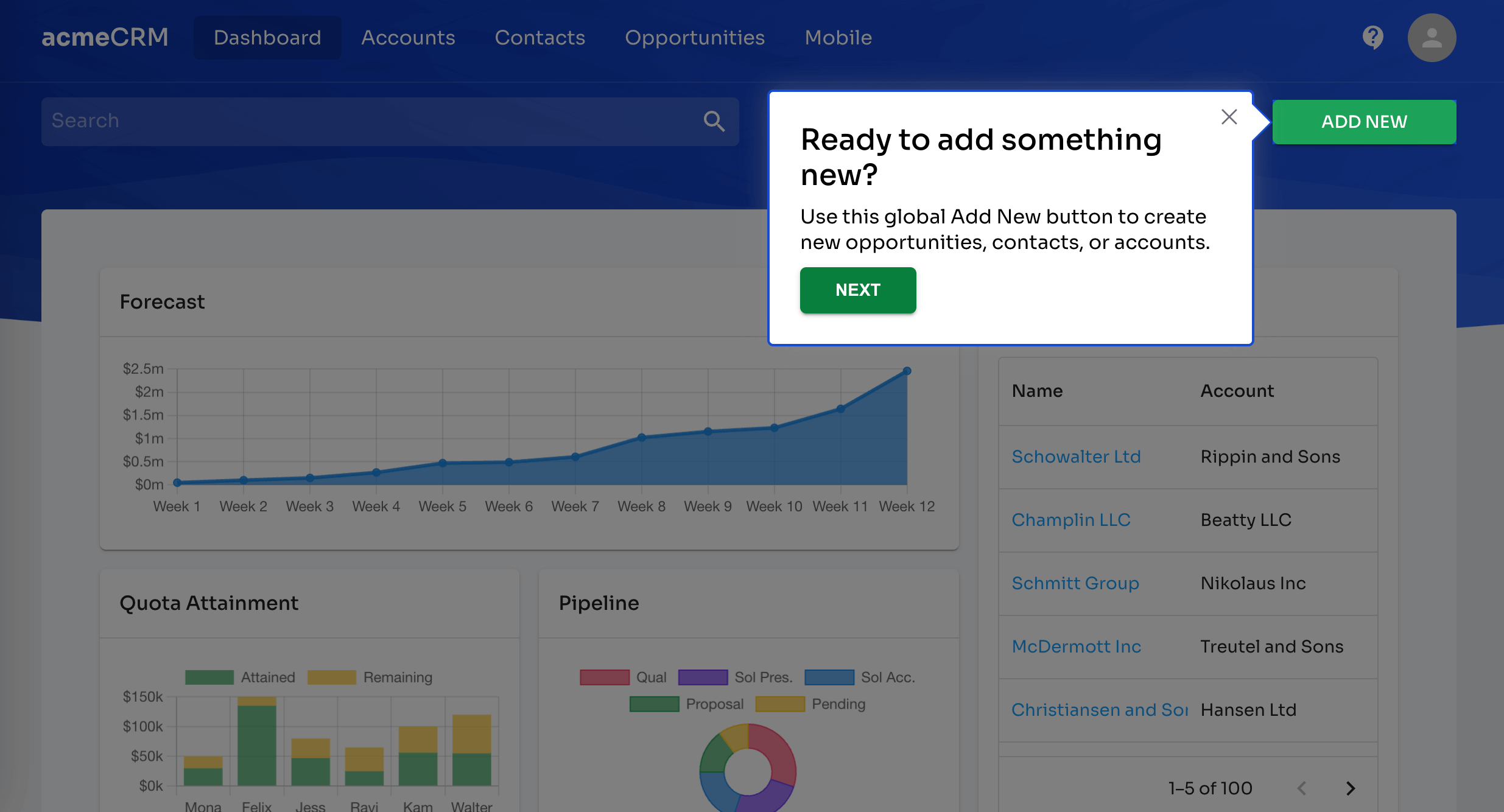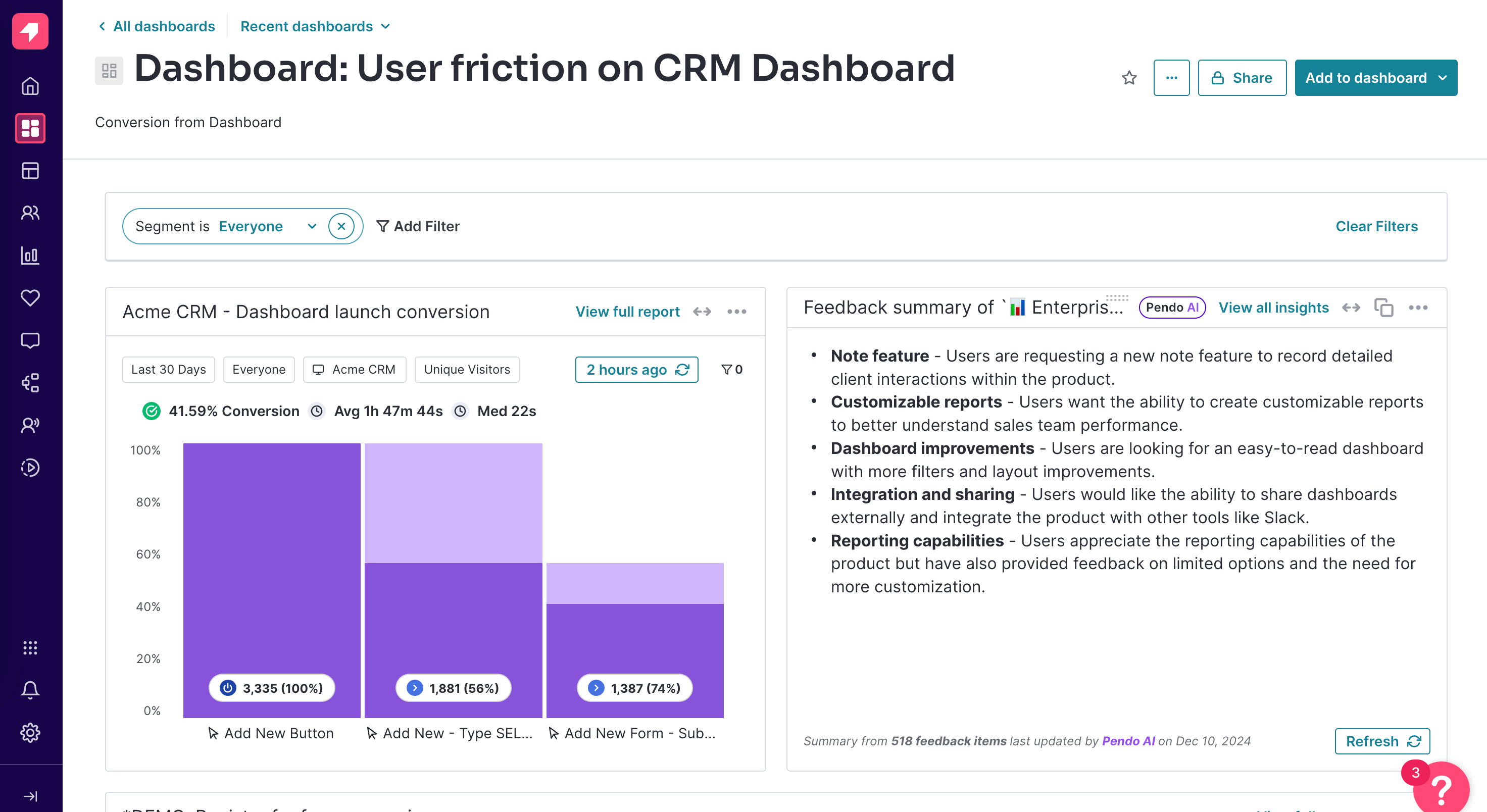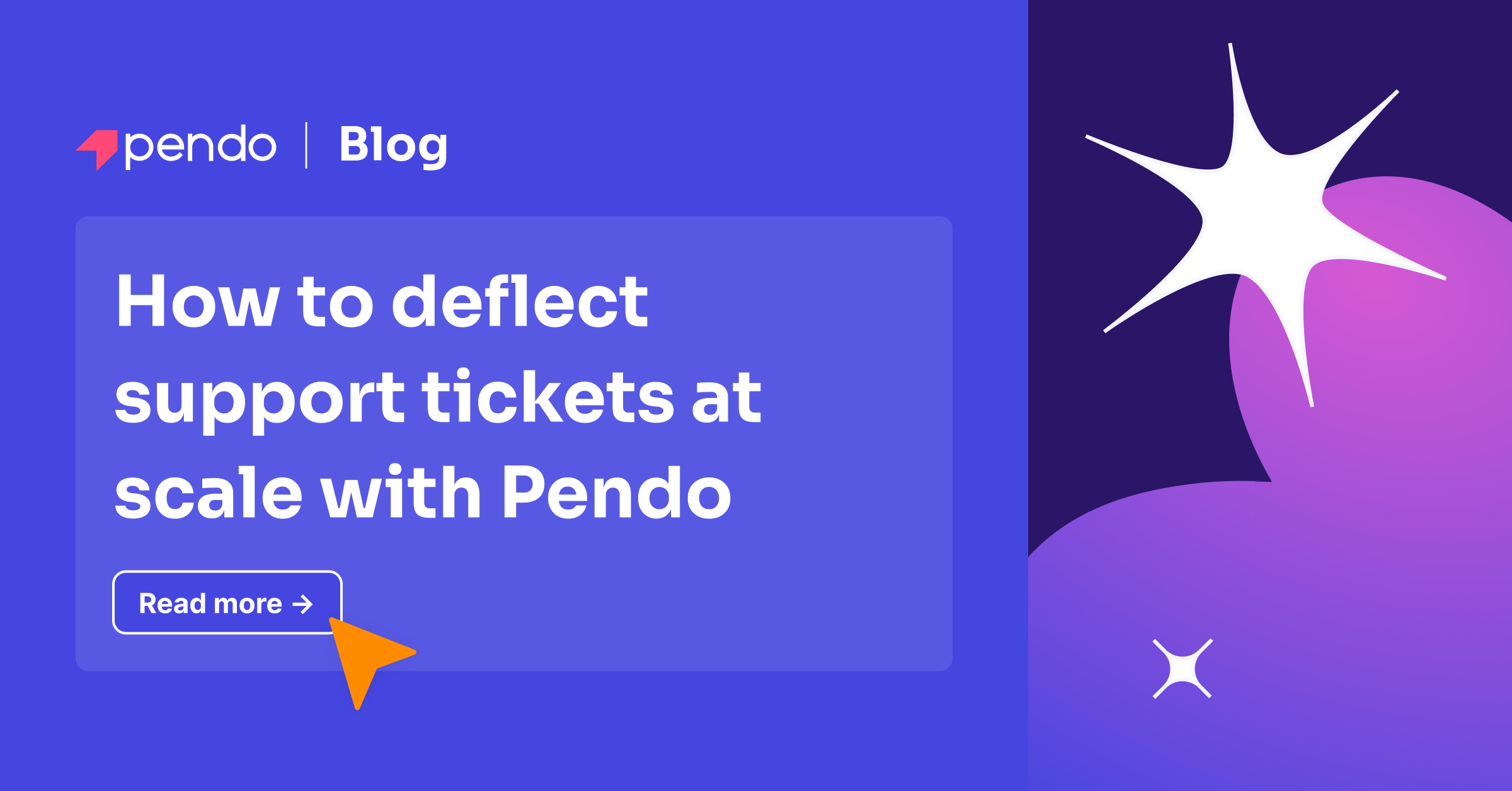No matter how seamless your user experience (UX) is or how valuable your product’s features are, support teams still find themselves inundated with support calls and tickets. While in some cases this might be due to an actual product bug or outage, in most cases, they’re due to lack of education or context around the product’s basic functionality.
The good news? You can prevent this with Pendo.
Teams can first use product usage data to understand where users are experiencing friction and what they’re doing right before they seek help. From there, in-app guides allow you to easily add contextualized support—and solve issues before they happen.
The power of proactive support ticket deflection
In addition to the instant impact of reduced support inquiries, this proactive approach can help drive key business outcomes, too. Less users experiencing friction (and frustration) means higher customer satisfaction and—more importantly—lower costs since you don’t have to dedicate as many support resources to common issues.
Here’s how to use Pendo to cut costs by deflecting support tickets at scale.
Step 1: Use Analytics to identify friction
The first step is to identify where users encounter issues in your application, and one of the best ways to do this is with a Funnel report.
Funnels help you measure how users move through a defined series of steps that you want them to take. For example, you might want a visitor to start at your main dashboard, then select your newly launched feature, and then move onto a different key feature.
Dropoff in a funnel indicates potential friction or barriers in the user journey, which can lead to an increase in support tickets. Ready to get started? Here’s how to create a funnel in Pendo.
Step 2: View dropoffs with Session Replay

Next, you need to understand what’s driving the dropoff.
Session Replay enables you to visually play back a user’s session in your product. It captures clicks, mouse movements, and page scrolls and shows exactly what a user did inside your application. You can also filter by areas of your product or types of user frustration like dead clicks, u-turns, or rage clicks.
From the Funnel report, click directly into replay samples to see what caused users’ friction. This is only possible in Pendo, because replays and product analytics work together. You can then use this visual proof as evidence to get buy-in and support to address the issue.
Want to learn more? Here’s an overview of Pendo Session Replay.
Step 3: Create a Guide to mitigate friction

Now it’s time to take action on the data you’ve collected.
Pendo Guides make it easy to quickly address the friction that you know users are experiencing, thanks to replays and product usage data. For example, you might need to create a tooltip that provides context for a specific feature that’s causing confusion or build a three-step walkthrough to help users set up their account properly.
Looking to uplevel your in-app guide strategy? Dig into these dos and don’ts for impactful in-app guides.
Step 4: Measure the impact with Analytics and Listen

Once you’ve created an in-app guide to mitigate friction, Pendo makes it easy to determine how you impacted the user funnel using both quantitative and qualitative data.
You can again use a funnel in Pendo Analytics to see if the completion rate for the process has improved. It’s also useful to leverage AI-powered feedback summaries in Pendo Listen to see if users are still submitting feedback about this area of the product, and how they feel about the change.
It’s best to view all of this data together in a Dashboard. This way, you can quickly get a snapshot of user friction on an ongoing basis and easily share this information with the rest of your team. (Pro tip: Check out this comprehensive guide to Dashboards in Pendo.)
Want to learn more about the Pendo One platform and how it can help you reduce costs? Take a self-guided tour or schedule a custom demo today.
Gaming Center
A gaming center is a dedicated space where people come together to play video games, whether on PCs, consoles, or arcade machines. These centers can offer a range of services, from casual gaming sessions to competitive tournaments.
